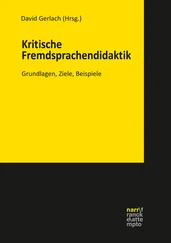The subject rightly experiences this shock as involuntary. This involuntary displacement of attention is accompanied by a well-justified fear and trembling, even a terror. It is the terror of the unknown, of what is beyond us. Though he disparaged Rilke’s line about beauty being »the beginning of terror,« in fact Adorno acknowledges that terror in the aesthetic encounter. He does so in his term »Erschütterung,« perhaps the central term with which he designates the impact of what I am calling »aesthetic violence«. Erschütterung has been translated into English as »shudder,« but to me »shudder« does not convey the full import of Adorno’s term. I prefer to translate Erschütterung as »shaken to one’s foundations.« As Adorno puts it, »The shock aroused by important works […] is the moment in which recipients forget themselves and disappear into the work; it is the moment of being shaken. The recipients lose their footing; the possibility of truth, embodied in the aesthetic image, becomes tangible.«8 What shakes us so profoundly is the sudden dawning of an awareness of something beyond our ordinary grasp – something that will profoundly disrupt our current organization of experience.
The Invitation and the Trap
Another aspect of the artwork’s approach to the subject is its allure. One of the functions of beauty in the artwork is to attract the subject, to draw it in. It functions like an invitation, perhaps even a seduction, to the unwary. There is something like an erotic element in this invitation; union of a kind is being proposed. Indeed, attention is a form of merging with what is perceived.
Again, Adorno is not the only one to articulate this aspect of the aesthetic encounter. The critic Adrian Stokes, best known for his studies of the Quattrocento in Italy, writes in psychoanalytic terms of the »invitation in art.« Psychically, he writes, the sensuous beauty of art first invites us to come inside and lose ourselves in the work. The experience is both like falling in or into love and like returning to the mother’s breast. But once this merger of our attention with the activities of the artwork has occurred, we are, as it were, helpless, and we are forced to experience the destructive forces which the work has incorporated into itself and subjected to the organization of aesthetic form.9
Because there is an element of the involuntary in our response to the powerful allure of beauty, an element of suspicion also hovers around the work’s invitation. Perhaps we are being seduced and entrapped. After all, how can we know what we are getting into? As the psychoanalyst Donald Meltzer, a friend of Stokes, puts it in his book The Apprehension of Beauty , how are we to read the mysteries in beauty? We do not know whether the beautiful – in this case he is speaking of a woman – is Beatrice or the lethal Belle Dame sans Merci.10
Thus the artwork that shocks and seduces can also be experienced as a trap. It holds us in bondage; we are enthralled, as we say. We have unexpectedly and involuntarily fallen into this trap, and now it holds us and will not let us go. To use an extreme image, the work of art is in some sense like the Venus fly trap – the carnivorous plant that lures insect into its depths, only to consume them. To be sure, the work, for Adorno, does not simply digest the mutilated subject for its own purposes, nor does it simply chew him up and spit him back out. But it certainly does not leave him unscathed.
For Adorno, as I have noted, the viewer does not incorporate art but rather vanishes into the work of art. It is equally true, however, that the work enters into and merges with the subject. But as Adorno says, this does not mean that the subject has incorporated the work into himself. Rather, the work has invaded the subject and displaced what he originally was. If as Adorno says, the subject of aesthetic experience becomes internally active by internally recreating the immanent logic of the artwork, this activity is at the same time a submission. Essentially, the artwork has overpowered and trapped the subject by making the subject himself into the arena of aesthetic experience. There is nothing left between artwork and subject but what transpires in the arena that was originally the subject himself.
Terror and the Abyss
The artwork’s capacity to overwhelm the subject is one of the primary forms of what I am calling aesthetic violence. The subject feels he has become involved in something – or something has entered him – that is beyond his capacity to master and assimilate in his usual mutilated mode of functioning. In the most fundamental way, what the mutilated subject encounters in the arena of aesthetic experience is something that is emphatically not das Immergleiche, not the familiar »always-the-same.« What is beyond one’s capacity by definition produces anxiety. It is potentially ungraspable and potentially lethal. One cannot see its bounds; perhaps it is infinite. This is what Adorno refers to as Erschütterung , being shaken to one’s foundations. The potentially infinite has entered into the subject’s very structure.
With the entry of the potentially infinite, the arena of aesthetic experience ceases to be merely a space that extends horizontally. It opens up vertically, to the heavens, the infinite and ungraspable, the void and the abyss. For the presence of the potentially infinite is also the possibility of our own death, the death of ourselves as we have known ourselves. In a similar vein, the psychoanalyst Donald Meltzer, speaking of a child’s »amazement« at an unbelievably new experience, cites the Jewish Book of the Dead with its admonition, »Stand close to the dying, because when the soul sees the abyss it is amazed.«11 A glimpse of the abyss – that which is without form and potentially without bounds: this is the fearful infinity into which the subject may vanish. It is as though the subject, finding himself in the arena of aesthetic experience, hears the gates closing behind him, senses the overwhelming power of his entrancing opponent, and looks up amazed into an infinite sky.
Will this mean catastrophe or deliverance? The contemporary psychoanalyst Michael Eigen has captured this vital ambiguity and the inexorable quality of its logic in an essay on the writer Flannery O’Connor. He calls it »the Sword of Grace.« Eigen is writing of the issue of religious faith in O’Connor’s fiction, but the inexorability and ambiguity apply equally to her writing and to the aesthetic encounter as Adorno conceives it. »In O’Connor’s fiction faith is a violent business,«12 Eigen writes. Her stories, he says,
»move toward some central shock or jolt, which may convey a certain mystery, but which also seems to rise inevitably from the nature of her characters and life itself. […] Often these telling moments are catastrophic and do not always result in a reorientation of the characters in question. Many of her characters break under the strain of a potential conversion experience they refuse or are unable to sustain. In extreme terms, one either changes or dies, possibly both. The logic of the Biblical call to die to be reborn can be ruthless.«13
Eigen raises the question of whether the strain of the encounter with mystery, as he calls it, can be sustained, whether we will survive it. The same question arises with the aesthetic encounter. It exposes us to the infinite and the abyss. Can we bear it?
Exposure to the infinite threatens to destroy the mind with its limited powers of coherence and control. The work of art can arouse emotions of such overpowering intensity that we feel brought to the brink of madness. The abyss and the most primal are close. Shakespeare’s King Lear is a case in point. Not only does the old King Lear go mad in the course of the play, but in the final scenes of the play, confronted with Cordelia’s death, Lear is so undone by overwhelming grief that he can only howl. If he had words, he says, he would »use them so / That heaven’s vault should crack«14 – in other words, so that the abyss he is exposed to would be laid bare.
Читать дальше












